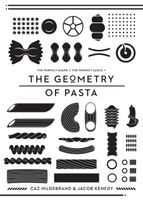Pizzoccheri
By Caz Hildebrand and Jacob Kenedy
Published 2010

A very locally specific pasta, from Valtellina in Lombardy, this is another form that has emigrated and become probably as well-known outside Italy as it is within, which isn’t saying all that much. The name derives from pinzochero meaning ‘bigot’, but in this case simply implying rustic or provincial connotations (probably). Pizzoccheri are stubby noodles made predominantly with buckwheat flour. Buckwheat in Italian is called grano saraceno ‘Saracen grain’; its origins may have been further east than Syria, as it is to this day common in Yunnan in its wild form. It is not a true grain, but a seed, and gluten-free, which presents a challenge to the pasta-maker who relies on the protein to bind his or her pasta. While early recipes may have had no wheat at all, most modern cooks add a proportion of semolina. Some believe this improves the texture of the pizzoccheri, others that it compensates for a lack of skill in handling a fragile dough. In either case, to the home cook, it is a welcome addition.
Become a Premium Member to access this page
Unlimited, ad-free access to hundreds of the world’s best cookbooks
Over 160,000 recipes with thousands more added every month
Recommended by leading chefs and food writers
Powerful search filters to match your tastes
Create collections and add reviews or private notes to any recipe
Swipe to browse each cookbook from cover-to-cover
Manage your subscription via the My Membership page
In this section
Part of
Advertisement
Related Recipes
-
-
-
-
Related Reference
-
-
-
-
Advertisement




